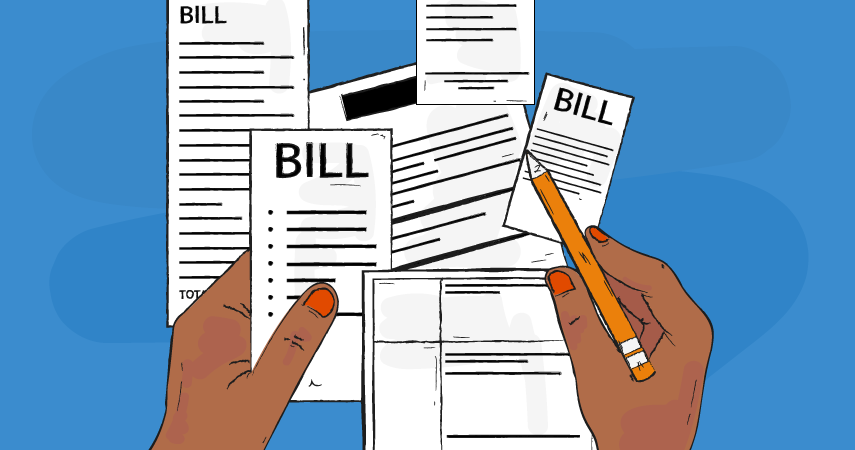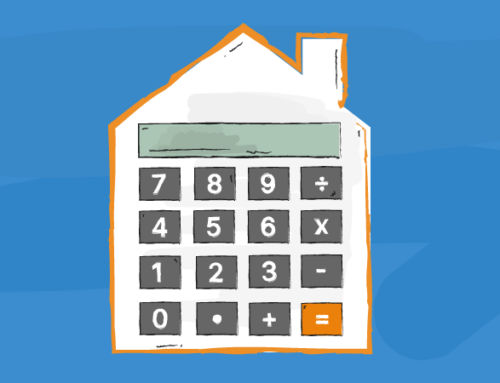Cost of living crisis – financial tips for landlords and tenants

Households are currently facing increasingly crippling costs, partly brought about by the energy cap increase, which saw utility bills rise.
Although costs like council tax, electricity, and gas are usually managed by the tenant, that doesn’t mean the problem is solely the tenant’s. The current cost of living crisis could leave tenants struggling to pay rent, especially if they need to prioritise eating and heating. This might lead to tenancies failing and the risk of rent arrears.
Read on for information and financial tips for landlords and tenants:
How badly is the cost of living crisis hitting renters?
By the end of 2022, Hamptons International estimate the average rented household will spend a record 54% of their post-tax income on rent and household bills. This is an extra £4.6bn paid by tenants.
They say this could cost the average household an extra £1,008 each year. The average cost of rent and bills could rise to £17,914 per household by the end of 2022. Looking at past data, this would be up from £16,906 in 2021.
How has the Government helped during the cost of living crisis?
The Government offered eligible households a winter heating cash-back of £150 non-repayable grant from April 2022.
From October 2022, a further £400 non-repayable discount was made available to eligible households, as part of the Energy Bills Support Scheme. The Government expected this to help around 29 million households across Great Britain. This ended in March 2023.
The Warm Home Discount was also expanded in 2022, with the aim to help nearly 3 million low-income households. Those eligible received a £150 one-off payment, instead of the usual £140.
Will switching energy provider help?
Tenants might find big savings if they look to switch energy provider when their current contract is up.
Tenants are legally permitted to choose the energy provider for the property if they manage the payment of bills.
Are there council tax discounts available?
There are several discounts on council tax available, depending on your circumstance.
A single person discount can be available if you’re the only adult in your home. There are also options for those with a disability, on a low income, or receiving certain benefits.
Your local council may also offer a discount for a second home that is empty because it’s awaiting repair work.
Second homes or holiday homes can also be taken into account for tax relief if there is no one living there on a permanent basis.
Is your let property as energy-efficient as it could be?
Suitable home insulation can help to cut energy usage and emissions.
As with many parts of our lives, cutting household emissions has the added benefit of helping to reduce running costs. Unless you pay the bills yourself, reducing energy bills isn’t an obvious benefit to a landlord. However, it can be a selling point for your let property.
Since April 2020, it has been a legal requirement for most privately let properties to have an EPC (energy performance certificate) rating of E or above.
An EPC rating measures the energy efficiency of homes on a scale of A-G, with A being the most efficient and G being the least. Landlords must check if they need to have an EPC before they let the property.
The Government is aiming to get as many homes as possible to a C rating by 2035. It could be in the long-term interests of landlords to upgrade beyond the bare minimum sooner rather than later.
Tenants can ask landlords for consent to make energy efficiency improvements to their home, which landlords cannot unreasonable refuse.
Use low-energy lighting
Lightbulbs are a tenant’s responsibility but are they using the most energy-efficient bulbs? Perhaps they have not had to replace them since moving in.
Ealing Council states that lighting accounts for 15% of the average UK household electricity consumption.
According to the Energy Saving Trust, by switching to LED bulbs, you can help bring your energy bills down. Although the savings might seem minor, the sharp rise in energy costs have meant many of us are in need of ways to reduce our bills where possible. Potential savings include:
- £4-13 per bulb per year by switching from incandescent bulbs to LEDs
- £4-5 per bulb per year by switching from halogen bulbs to LEDs
Consider checking in with your tenants or taking a look at the current lighting situation during the next inspection of the property.
If you pay energy bills, check your costs
Landlords letting a house of multiple occupation (HMO) or a short-term let often include bills in the price of the rent.
If you are in the middle of a tenancy agreement, you cannot increase the rent to cover the rising prices. Remember to consider your costs and shop around for good deals.
The same can apply to property insurance. If you are looking for suitable cover for your let property, get a quote from us for our comprehensive Landlord Insurance.
The sole purpose of this article is to provide guidance on the issues covered. This article is not intended to give legal advice, and, accordingly, it should not be relied upon. It should not be regarded as a comprehensive statement of the law and/or market practice in this area. We make no claims as to the completeness or accuracy of the information contained herein or in the links which were live at the date of publication. You should not act upon (or should refrain from acting upon) information in this publication without first seeking specific legal and/or specialist advice. Arthur J. Gallagher Insurance Brokers Limited trading as Just Landlords accepts no liability for any inaccuracy, omission or mistake in this publication, nor will we be responsible for any loss which may be suffered as a result of any person relying on the information contained herein.
NR – reviewed 04/08/2023
FP1172-2022



